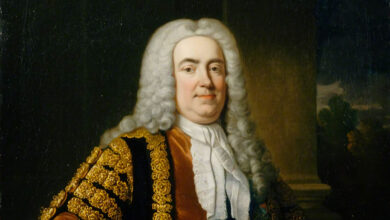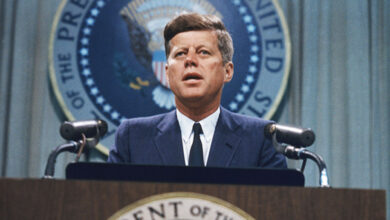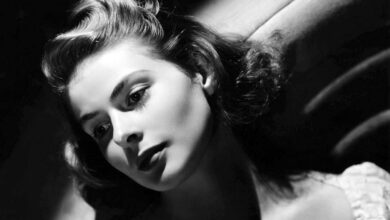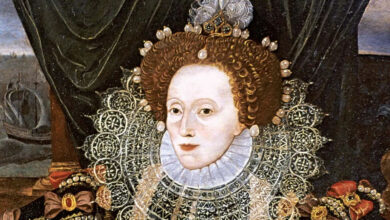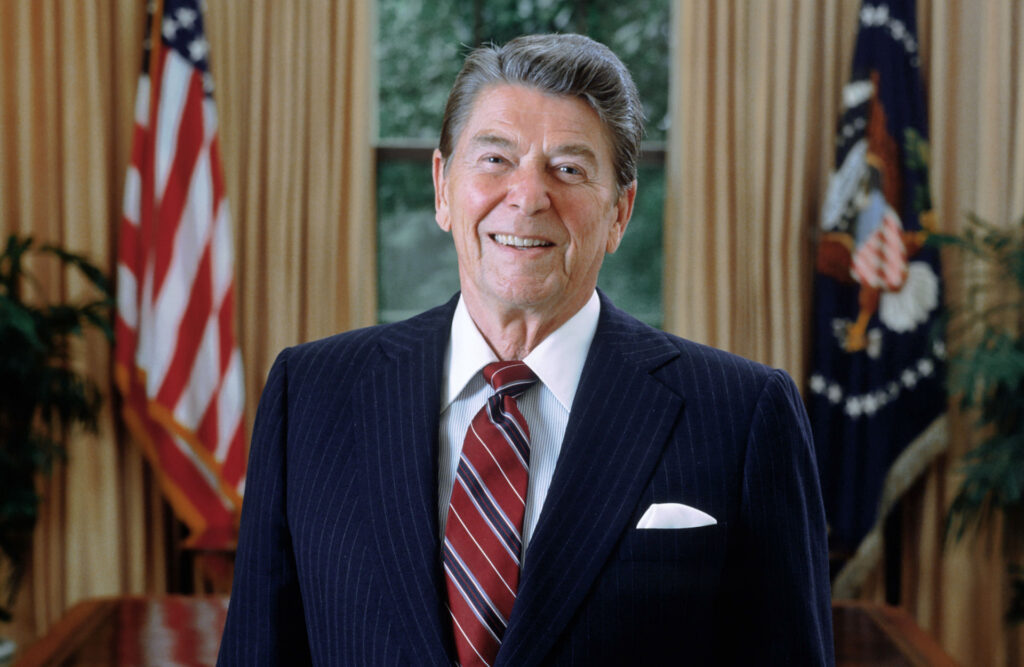
Podcast: Play in new window | Download
Subscribe: Spotify | Amazon Music | Youtube Music | RSS
“Trust, but verify.” – Ronald Reagan.
Ronald Wilson Reagan was born on 6 February 1911 in Tampico, Illinois, USA to parents Jack, a salesman whose grandparents had emigrated from Ireland to the USA and Nelle who was of English, Irish and Scottish ancestry and who was very active and influential within the Disciples of Christ church that she attended. Ronald also had an older brother called Neil who was born in 1908 and the two boys were strongly influenced by their mother’s religious beliefs with Ronald also being especially influenced by Pastor Cleaver who was his fiancé’s father and who was someone whom Ronald looked up to almost like a second father. Reagan’s own father also held strong religious beliefs and was very opposed to the Ku Klux Klan as well as anti-black racism and antisemitism in general. This also influenced Ronald’s belief and he gave speeches on racial equality when he became an influential Hollywood actor.
As far as formal education is concerned, Ronald went to Dixon High School which is where he developed an interest in acting as well as some sports and storytelling, an art that he also had learned from his father and then went on to attend Eureka College. He didn’t stand out as an academic at college and graduated in 1932 with average grades, majoring in economics and sociology, but he did get a reputation as someone who could turn his hand to pretty much anything including sports – he was captain of the swimming team and played football – theatre and politics, which led to him being elected as student body president and his involvement in protests against the president of the college.
After graduation, Ronald Reagan’s interest in acting and theatre hadn’t gone away and he took jobs as an announcer on several different radio stations. He also became the announcer for the Chicago Cubs baseball team on WHO radio in Des Moines and whilst travelling to California with the team in 1937 he took a screen test with Warner Bros Studios which led to him signing a seven-year contract. In the same year, he also enlisted in the Army Enlisted Reserve. His first screen credit was in 1937’s Love is in the Air and only two years later he had 19 film credits to his name appearing opposite the likes of Bette Davis, Humphrey Bogart and Errol Flynn. It was during this time that he acquired his lifelong nickname of The Gipper which was due to him playing the role of George Gipp in the film Knute Rockne, All American.
In 1938 Reagan starred alongside Jane Wyman in Brother Rat and soon after they announced their engagement, marrying on 26 January 1940 in Glendale, California. They went on to have two children, Maureen and Christine although unfortunately, Christine died soon after she was born. The couple also adopted a son called Michael who was born in 1945. The marriage wasn’t to last, however, mainly due to differing political views and they were divorced in 1949, although they remained lifelong friends.
In 1942, Ronald Reagan starred in the film King’s Row, and it became his favourite role. It also made him a star and his weekly salary was increased to $3000 but in the same year, he was ordered into military service and would never become a Hollywood legend as some of his contemporaries did.
Reagan had poor eyesight which excluded him from operations overseas during the Second World War and so he initially became a liaison officer of the Port and Transportation Service at Fort Mason in California before applying for and receiving a transfer to the Army Air Forces where he was assigned to the public relations department and then to the First Motion Picture Unit in Culver City. By the end of the war, he had achieved the rank of Captain and was stood down from active duty on 9 December 1945.
Returning to acting after the war, Reagan became vice president of the Screen Actor’s Guild and then in 1947, he was elected as its president achieving re-election a further six times.
In 1949 as his divorce was being finalised, Reagan met Nancy Davis after she contacted him in his capacity as president of the Screen Actor’s Guild as her name had appeared on a Communist blacklist in Hollywood. It turned out that she had been mistaken for another Nancy Davis and Reagan helped her to resolve the issue. The two were instantly attracted to each other and were married on 4 March 1952. They went on to have two children, Patti who was born in 1952 and Ron who was born in 1958.
As movie roles started to dry up during the 1950’s Ronald Reagan turned to television and appeared in several successful shows including Death Valley Days and as host of the General Electric Theater which ran for ten seasons between 1953 to 1962.
During his early political career, Reagan had been a Democrat but switched to the republican party as a result of him not liking the direction that the Democrats were heading and he was especially opposed to legislation that was introduced in 1961 that led to Medicare. Republicans in California liked what they were hearing and duly elected him as Governor in 1966. He immediately started to test the waters about the top job in the country, but Richard Nixon was to lead the party into the next presidential election. He came closer to being nominated as the Republican Party candidate in for president in 1976 but narrowly lost out to Gerald Ford.
1980 would be a different story though as Reagan was put forward as the Republican Party candidate to stand against Jimmy Carter and he went on to win decisively to become the 40th President of the United States. Ronald Reagan’s first term in office was marred by an assassination attempt by John Hinckley Jr outside the Washington Hilton hotel on 30 March 1981. Although near death when he arrived at the hospital Reagan made a full recovery becoming the first sitting president to survive being shot in an assassination attempt.
Reagan’s first term also had to contend with an air traffic controller’s strike, the invasion of Grenada, a civil war in Lebanon and the escalation of the Cold War, but his popularity continued to rise and he was returned to office in another landslide victory, but during the campaign, speculation started to be made about his health and in particular the possibility that he might be suffering from Alzheimer’s disease.
Ronald Reagan’s second term dealt with the war on drugs, the Libya bombing, the Iran-Contra affair and the AIDS crisis. However, he also enjoyed improved relations with the Soviet Union and got on well with its leader Mikhail Gorbachev. In a speech Reagan gave at the Berlin Wall on 12 June 1987 he implored Gorbachev to open the gate and tear down the wall. Two years later, citizens began to pass freely between East and West Berlin and in 1992 the demolition of the Berlin Wall was complete. In August 1994, Ronald Reagan was officially diagnosed with Alzheimer’s disease, a diagnosis which he made public in November of the same year. As the disease progressed Reagan’s mental powers started to diminish and he was only able to recognise a few people in his circle, including his wife Nancy, although he remained active, taking walks and playing golf. As things got worse though, he decided to remove himself from public life so that people would remember him as he used to be. On 5 June 2004, President Ronald Reagan died at the age of 93 from pneumonia which was complicated by his Alzheimers at his home in Los Angeles, California. A state funeral was held on 11 June and was attended by many world leaders, including the former British Prime Minister Margaret Thatcher with whom he had enjoyed a productive relationship as President and Former Soviet Leader Mikhail Gorbachev.
Podcast: Play in new window | Download
Subscribe: Spotify | Amazon Music | Youtube Music | RSS

